|
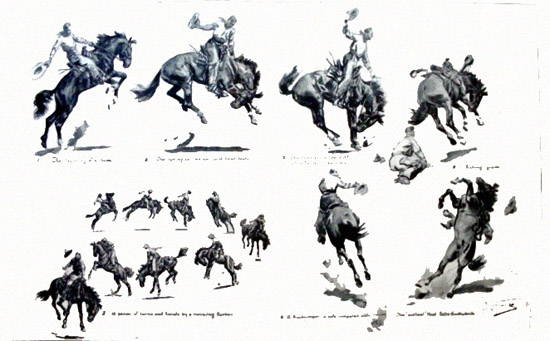
"Twisting, turning, Leaping, and Balling Backward! The Wiles of the Buckjumper as in the Wembley Rodeo
Portion of Advertisement for the Wembley Rodeo.
At the time, the Exhibition was the largest show of its kind ever held.
As indicated on the preceeding page, a number of American and Wyoming cowboys joined their Canadian, South African, and Australian
counterparts at the Exhibition. Not counting American cowboys, 56 of the nations of
the British Commonwealth and Empire were represented. The purposes of the
Exhibition was to "stimulate trade, strengthen bonds that bind mother Country to her Sister States
and Daughters, to bring into closer contact the one with
each other, to enable all who owe allegiance to the British flag to meet on common
ground and learn to know each other." Even though wireless service was in its infancy, the opening by HM King George V was heard by
an estimated ten million listeners. To hear the King's opening Click here
(linked).

Advertisement for Wembley Rodeo
The cowboys made a distinct impression on usual staid Lonooners. As Time Magazine, June 16, 1924, observed:
American rodeo cowboys and cowgirls made a lasting impression upon Londoners when they arrived at the capital of the British Commonwealth
en route for the Wembley Exhibition. One cowboy, sitting on the hood of an automobile,
yelled: "I want to rope a red-headed goil." He did, but she turned out to be a blonde,
so he let her go. Every silk hat within a rope's length was regarded as legitimate prey
and Londoners took it all with marked good humor. One body of men who quite overawed the
excited "cowpeople" were the London "bobbies;" they were not molested.
Thousands filled the stands as
cowboys straight from American and Canadian ranches gave demonstrations of roping, broncho busting, trick riding, wild horse racing, and bulldogging.
Seventeen Canadian cowboys entered the contest, including Pete Knight, Canadian Bronco Busting Champion. Knight shared top honors with
Pete LeGrandeur. Americans who frequently participated in Frontier Days included
cowgirls Mabel Strickland, Bonnie McCarrol who won the Lord Selfridge World Championship Trophy, Donnie Glover, Fox Hastings, Helen Elliot, Ruth Wheat,
Florence Hughes, Donna Glover, Vera McGinnis, Ruth Roach,
Tad Lucas, and Bea Kirnan. Judges included Tom B. Hickman. G.M. Jones, Phil Yoder and Tex Austin, who was the general manager.
Cowboys included bareback bronco rider Frank Studenick, trick and fancy roper Chester Beyers who used two ropes,
Tommy Kirnan who roped his wife and pony and repeated
the trick standing on his head, Buck Lucas, rodeo clown Red Sublett, and Mike Hastings to whom the Prince of Wales, later Edward VIII, presented a
thoroughbred horse.
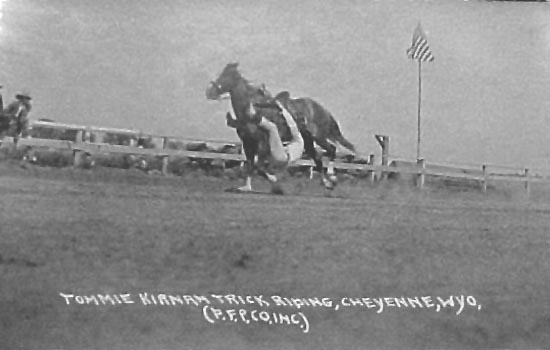
Tommy Kirnan, Frontier Days, 1919.

Tommy Kirnan, Frontier Days, 1915.
At wembley, Kirnan won the trick riding contest. Former Wyoming cattle baron, Sir Horace Punkett attended a conference at the Exhibition. Rudyard
Kipling made a point of seeking out Skeeter Bill because of Skeeter's poetry. Later Skeeter commented about
Kipling, "That man knows cattle and knows horses. You can always tell. Most people looking at a horse begin at the wrong end, while
Kipling looked at my horse's mouth."
Indeed, the rodeo was the most popular aspect of the Exhibition. Bronco busting was open to amateur riders. In the first
three days, a score of British riders tried riding the broncs. Only one stayed on long ennough to collect any money.
Yet so many attemted to enter the contests, that the lists had to be closed. Drovers from Australia however did better. Indeed, one
Hugh McIntosh who produced shows in Australia offered to back one of his buckjumpers, Arthur "Snowy" Thompson from Dubbo, New South Wales,
with a £1,000 wager. A New Zealand newspaper, The Truth, 12 July 1924 described his entry into the rodeo:
That chap Snowy Thomspon knew a thing or two, and was nearly putting something over the Smart Alecks from 'Murka. But at that, Snowy doesn't count as a true blue buckaroo over in Australia.
He has a reputation as a circus rider in buckjumping challeges on the circuit in New South Wales. One of the promoters of the
rodeo in London wanted a typical rought-rider from Australia. He cabled to his friend Sir Arthur Rickards or somebody: "Send me one fine specifmen of Aussie cowboy for my rodeo at Wembley."
Snowy Thompson of the circus was remembered, telegraphed for, put on board a boat almost without explanation,
excepting that there was lots of boodle to be got out of the game Wembling--and packed off by the outgoing boat for London.
On arrival in London, Thompson dutiully had his photograph taken on the roof of Australia House attired in Jodhpurs and holding an English saddle. He was in for a
rude awakening. He drew Headlight. Headlight had a good reputation. Two years before in Cheyenne, Headlight was the only horse to toss his rider.
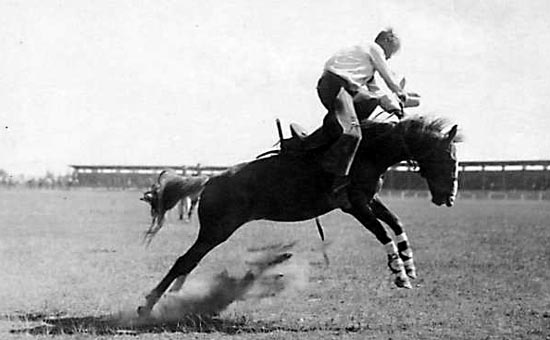
Headlight tossing Shorty Gideon, Frontier Days, 1922
A second horse also refused to buck. On the third horse, he was tossed on the fourth buck, knocked unconscience, and hauled out of the
stadeum on a strecher, thus, losing to Canaddian champion Pete Vandermere. Vandermere for his efforts received the win and $100.00 Fortunately for McIntosh the wager had been withdrawn over the use of a
crupper on the Aussie's saddle. Use of the crupper as was typical Down Under was disallowed; The paper explained:
Take the saddle that is commonly used in New Zealand in these latter days with the crupper. Why, all a fellow has to do to stick on is to bring the
rowels round under the belly of his mount, and, with the crupper to hold up against, the horse has the odds against him.
The paper continued:
The use of the English saddle makes for better riders that does the use of the American bullwarked affair that is as safe as a sofa for the man and gruelling for the horse."
Upon his return to Australia, Thompson was less than gracious accusing the Yanks of cheating and calling marking "ribald" comments to him. See the AgeAugust 25, 1924.

E. J. Corbett of Slough takes a tumble.
One observer noted that the cowboys rode "straight leg" whilst the Brits rode with gripped knees (as is typical in Britain).
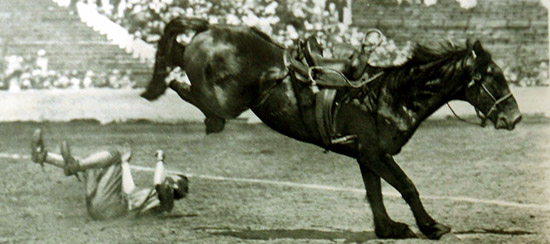
D. C. Wollett of Westbourne thrown
The rodeo was in for a rough ride. First, the Royal Society for the Prevention of Cruelty brought criminal charges against the show's manager Charles S. Cochran and several
cowboys. Cockranr esponded by attempting to have the Sun newspaper held in contempt for publishing
details relating to the upcoming hearing on the Royal Society's action. The controversy spilled over into the
House of Commons where Prime Minister Baldwin in discussing the situation in Mexico where British-owned property had been
siezed, was interrupted by having to answer questions about the rodeo. Ultimately, the steer roping conteats had to be held
behind locked gates. Nevertheless, the show attracted crowds as large as 100,000. In one instance one member of the audience who booed the performance
was forecibly ejected by fellow members of the audience.
Not withstanding its populatiry, the Wembley rodeo, however, was not to be repeated for another nine years. As the New York Post.
May 12, 1925,
noted,
There will be no rodeo this year, thanks to the difficulites made by the Society for the Prevention of Cruelty to Animals. The hapless
steer has found its patron and will not again have to be the sport of cowboys. Not that the British
are uniformly tenderhearted; they killed seven horses in steeplechase races on one week of this
spring's season without a groan from the S.P.C.A. or a letter of indignation in the newspapers. The rodeo
was drawing the largest successive crowds that ever filled a huge stadium until the S.P.C.A. spoiled the fun.
At the end of the rodeo, the Kirnans headed off to Paris to put on a show at the Vélodrome buffalo. The
Vélodrome received its name as a result of Buffalo Bill putting on a show there. Others joining Kirnans' show included Ruth Roach and
Red Sublett. later,
Red Sublett put on shows in Ireland. Others including Skeeter Bill and Dorothy headed back to
the United States on the S.S. Menominee. The ship was had good accommodations for the horses. A year before the British army had shipped forty polo ponies to the United States. Thus there were
nice white stalls padded with peat moss for the horses. The ship, however, was generally used for the emigrant trade.
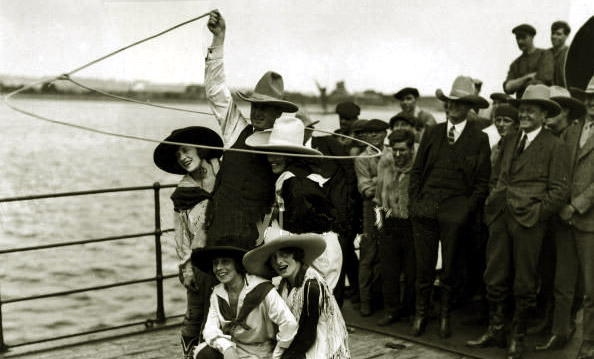
"Skeeter Bill" Robbins demonstrating trick roping on board the
S.S. Menominee in Southampton, 1924.
On his return to New York, Skeeter commented that the uproar over cruelty to animals was from a few "spinsters" who had never
seen the show. To add insult to injury to the miniscule purse, the Canadians discovered that Austin was about to leave them stranded in New York without
the promised carfare back to Alberta. The Canadians complained to the British consulate. At the time, Canadians were regarded as
British subjects and thus entitled to the intervention and protection of the British Foreign Service.
A few words from the British consulate and Tex Austin saw the light. The Canadians were on their way home.
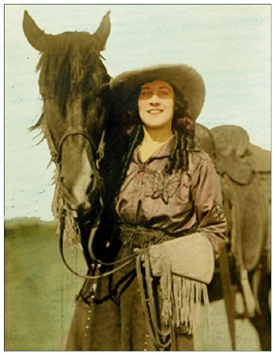 . . . . 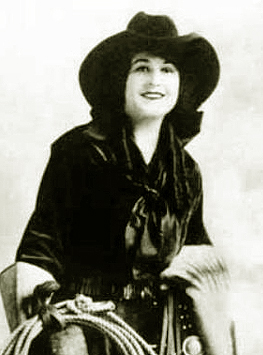
Dorothy Morell
Skeeter Bill became the manager of the Hoot Gibson ranch and appeared in
a number of movies with Gibson and developed the
Hoot Gibson bronc string. He served as arena manager for the Los Angeles World Congress of Rough
Riders Labor Day and the Santa Monica Pioneer Days Rodeos.
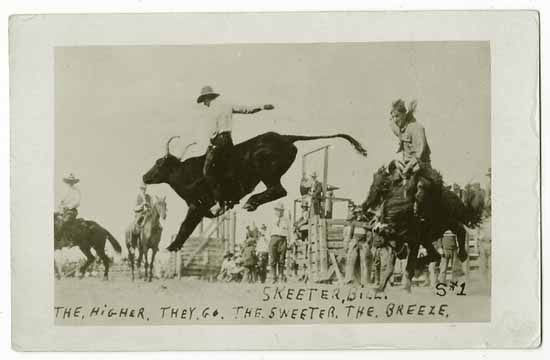
"Skeeter Bill" Robbins bullriding, date and location unidentified.
On November 28, 1933, Skeeter with his wife and some
friends were on the way to Noah Beery's Lake. The headlights of the car became obstructed with snow. As he got out
to adjust or clear the lights, a truck hit the car killing Skeeter and breaking Dorothy's back. Following the truck, was a coupe
driven by Wally Wilson, a Lone Pine cowboy and in which Carmen W. "Curly" Fletcher (1892-1954) was a passenger.
The coupe crashed into the wreckage of the truck and the Robbins car. As Curly was getting out of the
coupe another truck collided with the wrecked vehicles. A pipe on the second truck hit Curl causing a skull fracture. Curly is famous as the
author of "Strawberry Roan," a poem later set to music about bronco riding.
Next page, Frontier Days continued.
|